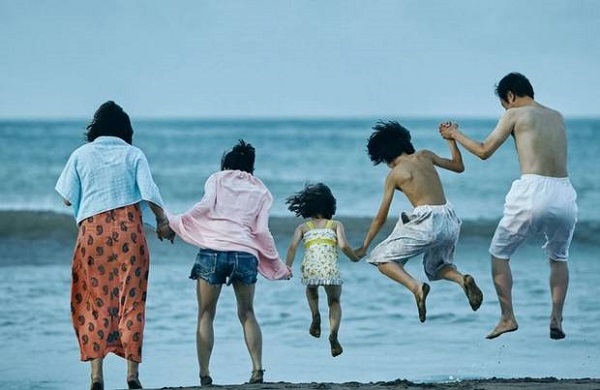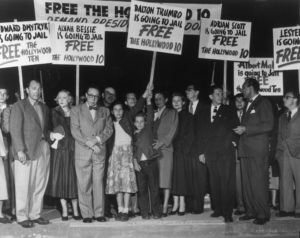 It would not be long until the boom of Hollywood in 1946 would begin to crumble under the weight of paranoia and scandal. The marks of war still remained and the claws of global dissension began to creep into the daily life and business of Hollywood. The HUAC (House of Un-American Activities Committee, led by Joseph McCarthy, began to weed out potential Communist threats in what became a political incarnation of Salem’s witch trials. Numerous Hollywood movers, shakers and stars found themselves in the crosshairs of the hunt. These included men like Charlie Chaplin and Dalton Trumbo. Just like the witch hunt of the past, people would name names in order to avoid their own indictments and mild implications of dissenting views were drawn into the fray. The seeds of discord between Hollywood and the government were planted and the separation would only widen in the coming decades.
It would not be long until the boom of Hollywood in 1946 would begin to crumble under the weight of paranoia and scandal. The marks of war still remained and the claws of global dissension began to creep into the daily life and business of Hollywood. The HUAC (House of Un-American Activities Committee, led by Joseph McCarthy, began to weed out potential Communist threats in what became a political incarnation of Salem’s witch trials. Numerous Hollywood movers, shakers and stars found themselves in the crosshairs of the hunt. These included men like Charlie Chaplin and Dalton Trumbo. Just like the witch hunt of the past, people would name names in order to avoid their own indictments and mild implications of dissenting views were drawn into the fray. The seeds of discord between Hollywood and the government were planted and the separation would only widen in the coming decades.
On top of this was the entrance of television, a personal, more private form of entertainment that made the public more apt to not step outside their doors. Cinema business began to suffer due to the luxury and comfort afforded people by TV sets. The hassle and, sometimes, nuisance of sharing space with others in the communal act of viewing movies at a theater was giving way to the isolation of the nuclear family and their fortresses. The studios and theaters had to find a way to make the experience of the cinema bigger and more exciting and so began the first winds of film promotion and advertising. The epic film began to have its heyday in the 1950s with films like Ben-Hur and The Ten Commandments, directed by Wyler and DeMille, respectively. These Biblical adaptations were capturing imaginations with their larger than life stars, thrilling action set pieces, and special effects, while still tapping into the religious center that was still largely intact in the American consciousness at this point.
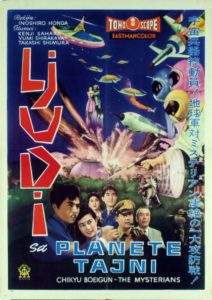 On the other end of the spectrum were science fiction flicks and creature features that traded on the paranoia present in the underbelly of American society because of the Cold War scare and the beginning of the Korean conflict at the start of the decade. Alien invaders, body snatchers, radioactive, mutant people and animals filled the screens of the cinemas. The level of visual boldness that Hollywood began trading in would start to draw people back together in front of the bright screens–offering content and an experience that a television, no matter how good, could not provide. 1950s horror in America would be consumed with the social turmoil and fears that plagued the country in the post-war years as we began to figure out this brave and unfamiliar new world in which we lived.
On the other end of the spectrum were science fiction flicks and creature features that traded on the paranoia present in the underbelly of American society because of the Cold War scare and the beginning of the Korean conflict at the start of the decade. Alien invaders, body snatchers, radioactive, mutant people and animals filled the screens of the cinemas. The level of visual boldness that Hollywood began trading in would start to draw people back together in front of the bright screens–offering content and an experience that a television, no matter how good, could not provide. 1950s horror in America would be consumed with the social turmoil and fears that plagued the country in the post-war years as we began to figure out this brave and unfamiliar new world in which we lived.
Yet the most paramount feature of the decade–and part of the next–would be the new wave of Asian cinema. China began its golden era in the late 40s, while Japan, South Korea, India and other countries found their distinct visual and narrative voices in the 1950s. Cinematic greats like Akira Kurosawa and Satyagit Ray would give the world some of its most enduring images with films like Seven Samurai (七人の侍 Shichinin no Samurai), Rashomon (羅生門 Rashōmon), and The Apu Trilogy. Many of these films furthered the technical, creative, narrative, and visual veracity of filmmaking influencing nearly every film in their wake in some form or fashion. Many of these films and directors would have a direct influence on the New Hollywood movement of the 1960s-1980s. Not to mention its instrumental place in the horror that would be made in the next few decades–giving the genre more complexity and new breath. It is absolutely impossible to sum up the importance of the Golden Era of Asian cinema for the future of film. There is very little celluloid in the world today that isn’t touched by the magnitude of these new non-Western voices.
Ishiro Honda is best known for bringing Gojira into the world in 1954. The striking image of a massive, monstrous beast that destroys anything in its path and leaves terror and destruction in its wake was a new figure within the realm of the creature feature. This film gave a language to the world to understand the terror and destruction that took place in Japan after the American bombing in Hiroshima and Nagasaki. Gojira is awakened in the film by a nuclear blast and the film ends with the destruction of Gojira, but the potential for another Gojira to arise if nuclear testing continues to take place in the world.
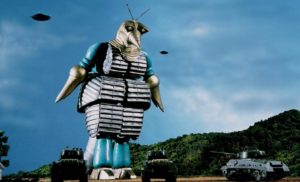 During the 1950s, Honda was an incredibly prolific filmmaker and gave the people of Japan a new mythology with the creation of Rodan, Ghidorah, Varan, and various other kaiju creations. The Japanese creature feature delivered an intense and fruitful metaphor for the effects of nuclear war and cultural/social colonialism by Western powers, significantly America. One of Honda’s lesser known and seen films is entitled Chikyū Bōeigun (translated: Earth Defense Force, but titled The Mysterians in the American release) where an alien race of people come down to Earth and take residence on the Japanese mainland and maintain that they are peaceful and only there for scientific discovery.
During the 1950s, Honda was an incredibly prolific filmmaker and gave the people of Japan a new mythology with the creation of Rodan, Ghidorah, Varan, and various other kaiju creations. The Japanese creature feature delivered an intense and fruitful metaphor for the effects of nuclear war and cultural/social colonialism by Western powers, significantly America. One of Honda’s lesser known and seen films is entitled Chikyū Bōeigun (translated: Earth Defense Force, but titled The Mysterians in the American release) where an alien race of people come down to Earth and take residence on the Japanese mainland and maintain that they are peaceful and only there for scientific discovery.
They tell the Japanese authorities that they only want to utilize 3 kilometres of land and be given permission to prolong their genetic line through the Japanese nation’s women. The authorities rightly ask how these foreigners can be there only peacefully when they didn’t ask to land or use the land in the first place and daring to pick out three Japanese women to take as mates without having said permission in the first place. Something is not quite right with these intruders.
For the rest of the film’s runtime, we see Japanese authorities and scientists attempting to build weapons to deflect the alien weaponry–which utilizes radioactivity, basically melting the cannons and tanks–and destroy the alien base before they take over the Eastern side of Japan and beyond. While the film is not doing anything visually different than other Honda-Toho releases during the day–or American science fiction for that matter, the addition of the prefigured Power Ranger-like space invaders adds a nice coloring to the typical metaphor around nuclear warfare that continues to haunt Japan to this day.
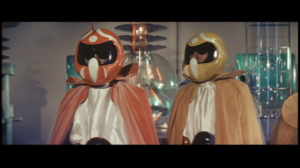 It is fitting that the film goes a little further than nuclear fallout by envisioning the force behind the nuclear attack coming in as “saviors” or “peaceful” scientists to study the land. The invasion of the borders and the assumption of the land and the land’s women is clearly showing the fears of of the Japanese nation and their struggle to maintain their culture and society in the wake of such a terrible disaster and outside entities trying to colonize culturally and biologically.
It is fitting that the film goes a little further than nuclear fallout by envisioning the force behind the nuclear attack coming in as “saviors” or “peaceful” scientists to study the land. The invasion of the borders and the assumption of the land and the land’s women is clearly showing the fears of of the Japanese nation and their struggle to maintain their culture and society in the wake of such a terrible disaster and outside entities trying to colonize culturally and biologically.
There are many times in the Old Testament when God warned his people to push back against marrying outsiders and the cultural/social effects of non-Jewish peoples on God’s chosen people. This was less about protecting borders, national sovereignty or the superiority/supremacy of a type of person, but the importance of maintaining the heritage of a promise, one delivered to the people of Israel from their God. The fear of colonizing forces is that that message would be watered down or forgotten completely and God’s chosen people would lose their way.
While national society and culture may not have the eternal promise of God underpinning them, they are unique within the economy of God’s creation. Each people, heritage, nation, etc. has a God-given uniqueness and beauty. Colonialism is by its definition an act of power and supremacy by stating that one nation’s governance, culture, society, people need the influence of another nation to “become better” or to gain a political foothold in the global playground. Often the colonists come under the guise of peace and observation much like the space invaders in this film. Yet it is only a matter of time before the human need to express one’s superiority begins to rear its head. Eventually, one nation tries to take power and control over another country that never asked for their presence. For instance, the British Empire controlled a ⅓ of the world at one point under the guise of British cultural/social/economic superiority.
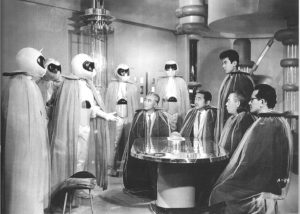 The Mysterians is the science fiction retelling of a tale as old as time and one that will continue for as long as humanity is allowed to practice its constant need for power and control over God’s creation. It seems that Ishiro Honda was deeply unsettled by the state of Japanese society post-WWII and a good portion of his films are his attempt to reconcile what had happened to the people of Japan and find a language to move forward into a future that, while it hasn’t forgotten the past, seeks to transcend that past in order to find a brighter future.
The Mysterians is the science fiction retelling of a tale as old as time and one that will continue for as long as humanity is allowed to practice its constant need for power and control over God’s creation. It seems that Ishiro Honda was deeply unsettled by the state of Japanese society post-WWII and a good portion of his films are his attempt to reconcile what had happened to the people of Japan and find a language to move forward into a future that, while it hasn’t forgotten the past, seeks to transcend that past in order to find a brighter future.
Of The 1950s


